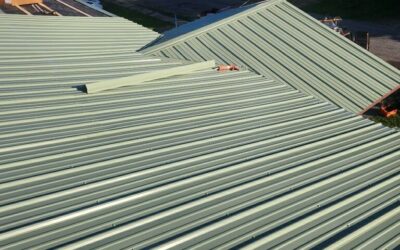The Ultimate Guide to Rubber Roofing: Benefits, Installation, and Maintenance
When it comes to roofing, homeowners and business owners alike often seek durable, cost-effective, and eco-friendly options. Rubber roofing, also known as EPDM (Ethylene Propylene Diene Monomer), has gained popularity as an excellent solution for flat or low-sloped roofs. Whether you’re replacing an old roof or installing a new one, rubber roofing offers several benefits that make it an attractive option.
At S&K Construction and Remodeling LLC, we specialize in a variety of roofing services for both residential and commercial properties in the Youngstown, Ohio area, including rubber roofing installations. In this comprehensive blog post, we’ll walk you through everything you need to know about rubber roofing, including its benefits, installation process, maintenance tips, and more.
What is Rubber Roofing?
Rubber roofing refers to roofing systems made from EPDM, a synthetic rubber material widely used for low-slope roofs. EPDM is a popular choice for both residential and commercial properties due to its resilience, versatility, and cost-effectiveness.
EPDM is made from a combination of ethylene and propylene (derived from oil and natural gas) along with a small amount of diene, which gives it the ability to form cross-links. This structure allows the material to resist extreme weather conditions, making it ideal for roofs exposed to harsh environments. Rubber roofing typically comes in large sheets that can be customized to the specific size of the roof.
Benefits of Rubber Roofing
Rubber roofing has several advantages that make it a preferred choice for many homeowners and business owners. Let’s take a closer look at some of the key benefits.
1. Durability and Longevity
One of the most significant advantages of rubber roofing is its exceptional durability. When properly installed, an EPDM roof can last anywhere from 20 to 30 years or even longer. This makes it a long-term investment that will protect your home or business for decades.
Rubber roofing is resistant to:
- Extreme Weather: EPDM can withstand high winds, heavy rain, snow, and even hail, making it ideal for areas with severe weather conditions.
- UV Radiation: Unlike traditional asphalt shingles, rubber roofing doesn’t degrade from exposure to ultraviolet (UV) rays, which extends its lifespan.
- Temperature Fluctuations: EPDM maintains its flexibility in both extreme cold and heat, preventing cracks or deterioration over time.
- Waterproofing: Rubber roofing is highly waterproof, making it an excellent choice for flat roofs that are prone to pooling water.
2. Cost-Effective
While the initial installation cost of rubber roofing can be comparable to other roofing materials, the long-term savings are substantial. EPDM roofs are generally more affordable than other flat roofing systems like TPO or PVC. Additionally, since rubber roofs require fewer repairs and maintenance over time, the overall cost of ownership is lower.
The installation of rubber roofing is relatively quick, which can also reduce labor costs. As the material is lightweight and easy to handle, laborers can install it more efficiently compared to other materials like asphalt or metal.
3. Eco-Friendly
If you’re environmentally conscious, rubber roofing is a green option for your home or business. Most rubber roofing systems are made from recycled materials, and at the end of their lifespan, they can also be recycled. This helps reduce landfill waste and minimizes the environmental impact of roofing materials.
Furthermore, rubber roofing has energy-efficient properties. The black color of EPDM roofing can absorb heat, which can help reduce heating costs in the winter. In warmer climates, reflective coatings can be applied to the roof to help keep the building cool and reduce air conditioning costs.
4. Low Maintenance
Rubber roofs require minimal maintenance once installed. EPDM’s smooth surface helps prevent debris buildup, and the material itself is resistant to mold, mildew, and algae growth. As long as the roof is inspected periodically for damage or wear and tear, it should continue to perform effectively for years.
If any repairs are needed, rubber roofing is relatively easy to fix. Small punctures or tears can be sealed with specialized EPDM roofing patches, making the repair process quick and cost-effective.
5. Aesthetic Flexibility
Rubber roofing is available in several colors and styles to complement the aesthetic of your property. While black is the most common color, reflective coatings can be applied to achieve different shades and improve energy efficiency. The material can also be customized to fit any roof shape, making it a versatile choice for homes and commercial buildings.
The Rubber Roofing Installation Process
Installing a rubber roof requires careful preparation and professional expertise. Here’s a step-by-step breakdown of the typical installation process.
1. Preparation and Inspection
Before installing rubber roofing, your roofing contractor will inspect your existing roof for damage and clean the surface. If your current roof has significant damage or an underlying structure that is compromised, it may need to be repaired or replaced before the rubber roofing can be applied.
2. Roof Deck Cleaning
The roof deck must be thoroughly cleaned to ensure proper adhesion of the EPDM material. Any debris, dirt, or old roofing materials must be removed. This step is essential for ensuring that the rubber roofing adheres securely to the surface and performs at its best.
3. Applying Adhesive (If Needed)
In some cases, an adhesive may be applied to help bond the rubber material to the roof deck. This step is usually necessary when the rubber sheets are being adhered to a smooth or non-porous surface. The adhesive is applied evenly, and it’s important to follow the manufacturer’s instructions to ensure a secure bond.
4. Rolling Out the EPDM Sheets
After the adhesive is applied, the EPDM roofing sheets are carefully unrolled and positioned onto the roof. Depending on the size of the roof, the sheets can be as large as 50 feet in length and 20 feet in width. These sheets are then cut to fit the dimensions of the roof.
5. Sealing the Joints
The seams of the rubber sheets are sealed using seam tape or a liquid adhesive. This ensures that water cannot seep through the joints and causes leaks. Properly sealing the seams is essential for the longevity of the roof.
6. Trimming the Edges
Once the rubber roofing is in place, the excess material around the edges is trimmed to ensure a neat and secure finish. The edges are then sealed with a special rubber adhesive or additional materials to ensure they are waterproof.
7. Adding Flashing
Flashing is installed around roof penetrations such as vents, chimneys, and skylights. Flashing helps direct water away from these vulnerable areas, preventing leaks.
8. Final Inspection
After installation, the roof is thoroughly inspected to ensure that the rubber sheets are properly sealed and the edges are secure. The contractor will also check for any potential weak points and address them before finishing the job.
Rubber Roofing Maintenance Tips
While rubber roofing is known for its low maintenance, periodic care can help prolong its lifespan. Here are some simple maintenance tips to keep your rubber roof in top condition:
1. Regular Inspections
Perform regular roof inspections, especially after heavy storms or extreme weather events. Look for signs of wear, damage, or debris accumulation. A professional roofing contractor can perform annual inspections to catch potential issues early.
2. Clean the Roof Surface
Keep the roof surface clean by removing leaves, dirt, and debris. This prevents the buildup of organic matter, which could lead to mold or algae growth. A gentle wash with water and a mild soap solution is usually enough to clean the surface.
3. Check for Punctures or Tears
Inspect the roof for any punctures, tears, or damage. If you find any, they can usually be repaired easily with a rubber roofing patch kit. Be sure to follow the manufacturer’s instructions for patching the roof to ensure a secure repair.
4. Maintain Gutters and Downspouts
Ensure that gutters and downspouts are clear of debris and functioning correctly. Clogged gutters can lead to water backup, which can damage the roof over time.
Is Rubber Roofing Right for You?
Rubber roofing is an excellent option for many homeowners and business owners, but it’s important to consider a few factors before making your decision. Rubber roofing is ideal for low-slope or flat roofs, but it may not be the best option for steeply sloped roofs. It’s also important to hire a professional contractor who has experience with EPDM roofing to ensure a quality installation.
At S&K Construction and Remodeling LLC, we have extensive experience installing rubber roofs throughout the Youngstown, Ohio area. Whether you need a new roof or are replacing an existing one, we’ll help you determine if rubber roofing is the best option for your property.
Conclusion
Rubber roofing is a durable, cost-effective, and eco-friendly roofing solution for low-slope and flat roofs. With its long lifespan, low maintenance requirements, and excellent weather resistance, EPDM roofing provides lasting protection for your home or business. Whether you’re considering rubber roofing for a new construction project or replacing an old roof, S&K Construction and Remodeling LLC is here to help.
If you’re in the Youngstown, Ohio area and need expert advice or professional installation services, contact us today to learn more about rubber roofing options for your property. We’re dedicated to providing high-quality roofing solutions that will protect your home or business for years to come.
 (440) 307-2060
(440) 307-2060

